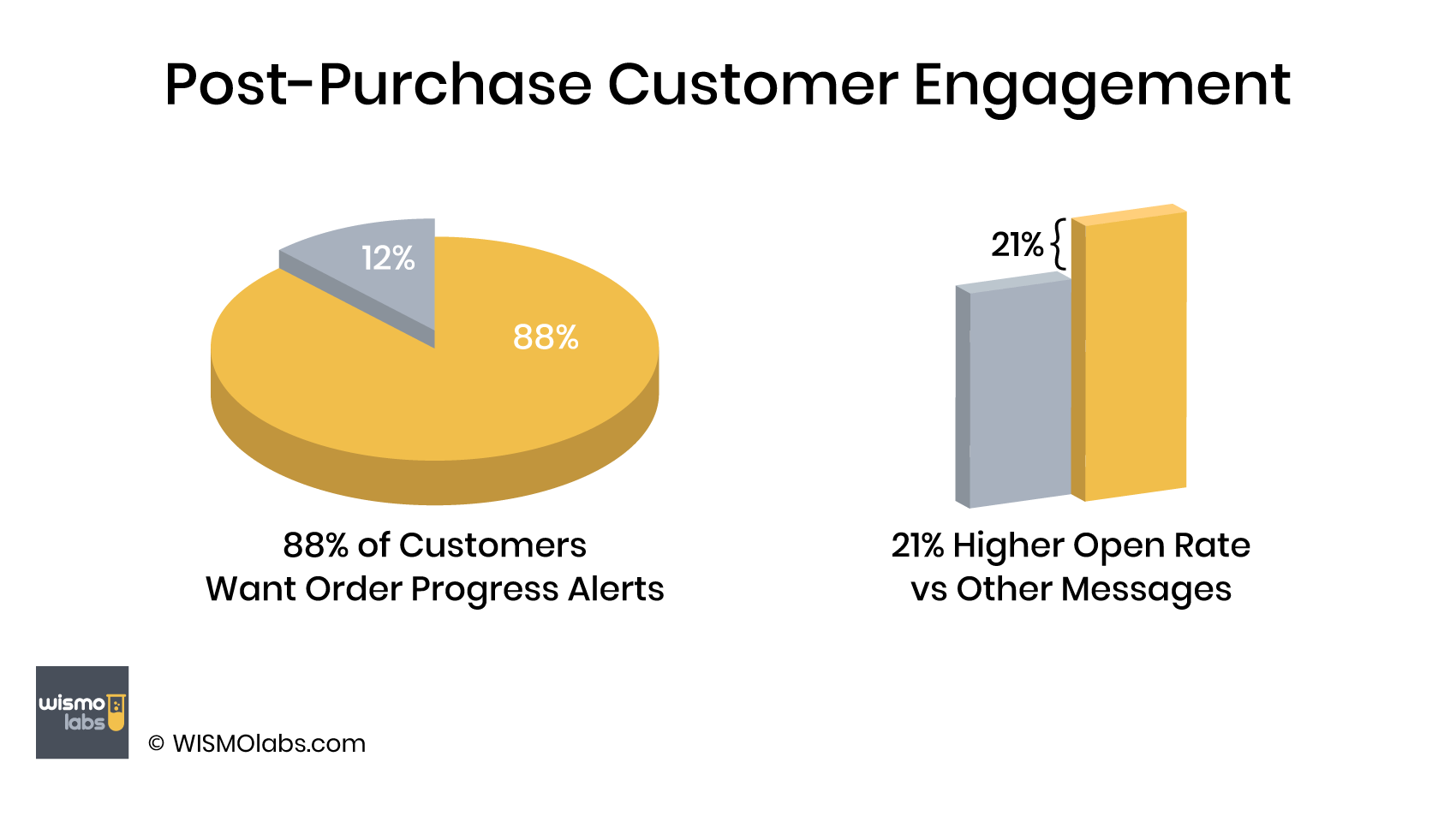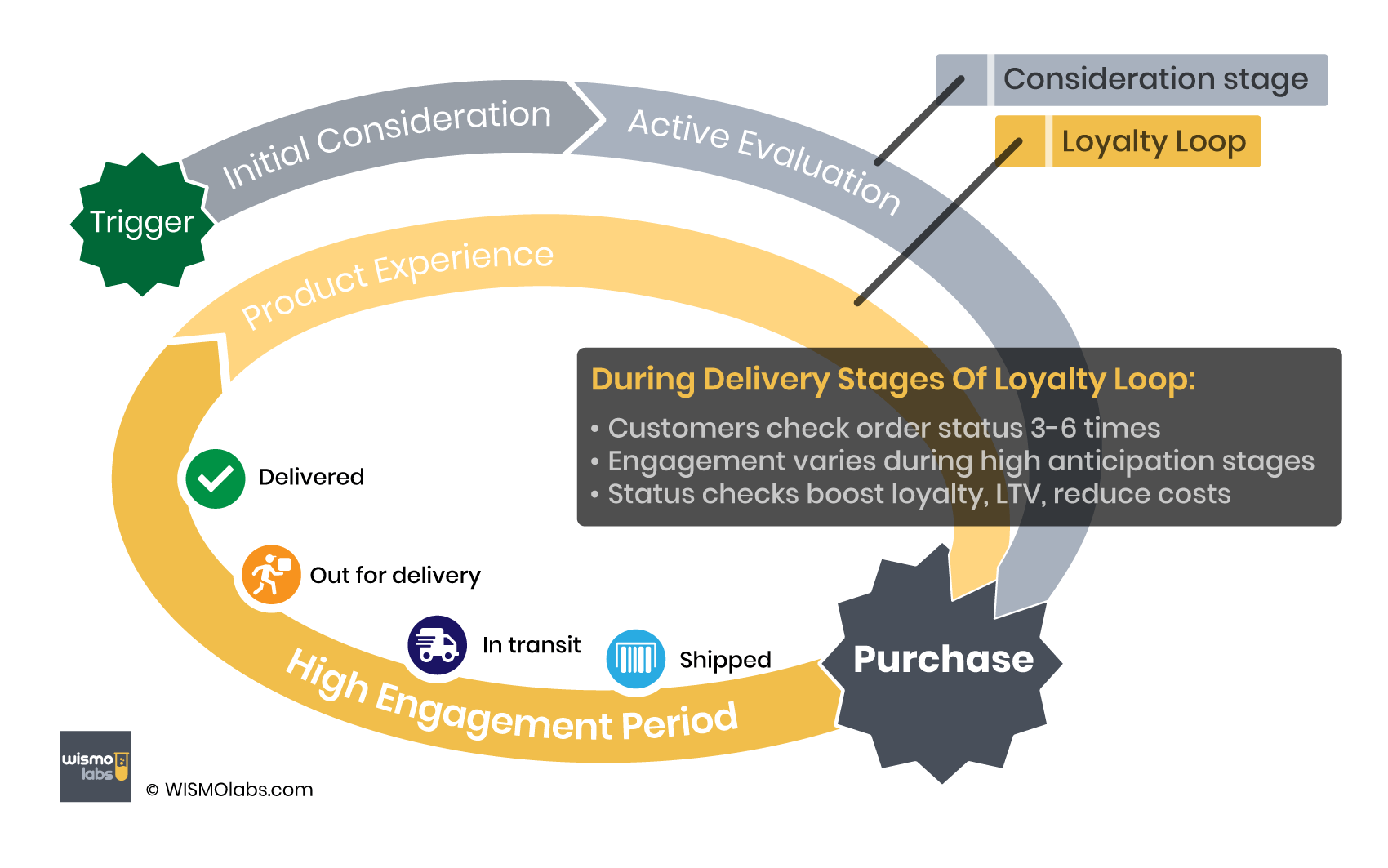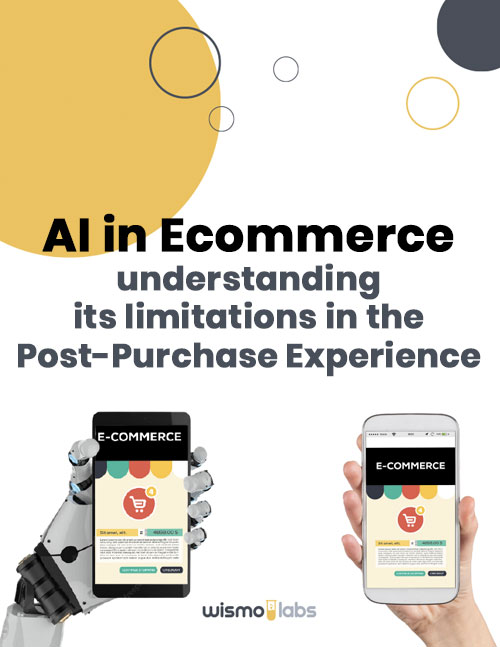In the competitive world of e-commerce, understanding customer satisfaction after purchase is crucial for long-term success. By implementing effective measurement techniques, businesses can gain valuable insights and improve their overall customer experience. Let’s explore seven powerful methods to gauge post-purchase satisfaction, with a focus on how WISMOlabs can help enhance your customer engagement strategies.
1. Net Promoter Score (NPS)
The Net Promoter Score is a widely used metric that measures customer loyalty and satisfaction. It asks customers a simple question: “How likely are you to recommend our product/service to a friend or colleague?” Responses are given on a scale of 0-10, with customers categorized as promoters, passives, or detractors.
Implementing NPS surveys can provide valuable insights into customer sentiment and help identify areas for improvement. WISMOlabs offers tools to integrate NPS surveys seamlessly into your post-purchase communication, allowing you to track and analyze results over time.
2. Customer Satisfaction (CSAT) Surveys
CSAT surveys are another effective way to measure customer satisfaction. These surveys typically ask customers to rate their experience on a scale, often followed by open-ended questions for more detailed feedback.
To get the most out of CSAT surveys:
- Keep surveys short and focused
- Ask questions at key touchpoints in the customer journey
- Use a consistent rating scale for easy comparison
WISMOlabs’ fully customizable tracking page can integrate with any CSAT survey tools and customer insight tools, providing a deeper understanding of your customers’ needs and preferences.
3. Post-Purchase Email Feedback
Timely follow-up emails are an excellent way to gather feedback and show customers you value their opinion. These emails should be sent shortly after the purchase or delivery, while the experience is still fresh in the customer’s mind.
WISMOlabs offers automated email feedback systems that can be customized to fit your brand voice and timing preferences. By leveraging customer engagement strategies after the sale, you can increase response rates and gather more actionable feedback.
Recent data from WISMOlabs reveals that 88% of consumers desire order progress notifications, highlighting the importance of post-purchase communication. This high demand for updates presents an excellent opportunity to engage customers and gather feedback throughout their post-purchase journey.

4. Social Media Monitoring and Analysis
Social media platforms are a goldmine of customer feedback. By monitoring mentions, comments, and direct messages, you can gain real-time insights into customer satisfaction and address issues promptly.
WISMOlabs integrates with various social media platforms, allowing you to:
- Track brand mentions and sentiment
- Respond quickly to customer inquiries
- Identify trends in customer feedback
By leveraging these insights, you can build stronger brand loyalty and improve your overall customer experience. Additionally, social networks like Instagram serve as dynamic platforms for extending the customer relationship post-purchase, turning customers into active brand advocates and fostering a vibrant online community.
5. Order Tracking and Delivery Satisfaction
The post-purchase experience doesn’t end when a customer clicks “buy.” Tracking order progress and ensuring smooth delivery are crucial aspects of customer satisfaction. WISMOlabs offers a branded tracking page that provides real-time updates and a visual map of the order’s journey.
This feature not only reduces buyer anxiety but also opens up opportunities for additional revenue through up-sell and cross-sell options. By measuring satisfaction with the delivery process, you can identify pain points and improve your logistics strategy.
WISMOlabs data shows that customers check their order status an average of 3-6 times per shipment, with engagement rates varying across different stages of the delivery process:
Customer Engagement Rates During Delivery Process
These touchpoints offer valuable opportunities to enhance customer engagement and satisfaction throughout the post-purchase journey. The graph clearly shows that the Shipping Confirmation stage has the highest engagement rate at 69%, indicating that customers are most eager for information when their order is first processed. The In Transit stage follows with 44% engagement, suggesting continued interest in the order’s progress. The lower engagement rates for Out for Delivery (21%) and Delivered (23%) stages might be due to the shorter timeframe of these phases or because customers are already anticipating the arrival of their package.
Understanding these engagement patterns allows retailers to tailor their communication strategy, focusing on providing the most relevant and timely information at each stage of the delivery process. This data-driven approach can significantly improve customer satisfaction and reduce anxiety throughout the post-purchase experience.
6. Customer Support Metrics
Analyzing customer support interactions can provide valuable insights into post-purchase satisfaction. Key metrics to track include:
- Response time
- Resolution rate
- First contact resolution
- Customer effort score
WISMOlabs helps you reduce WISMO (Where Is My Order) calls by providing proactive order updates and self-service options. This not only improves customer satisfaction but also reduces the strain on your support team and contributes to cost efficiency in customer service operations.
7. Return and Exchange Analytics
While not ideal, returns and exchanges can provide valuable feedback on product quality and customer expectations. By analyzing return reasons and patterns, you can identify areas for improvement in your products or descriptions.
WISMOlabs offers eCommerce returns solutions that streamline the process for customers while providing you with actionable data to improve your offerings and reduce return rates.
| Return Reason | Frequency | Status | Action |
|---|---|---|---|
| Size issue | 23% |
Improvement Area | Enhance size guides, add customer reviews on fit |
| Color mismatch | 15% |
Improvement Area | Improve product photography, add color swatches |
| Defective product | 12% |
Critical Issue | Review quality control processes, audit suppliers |
| Wrong item received | 10% |
Critical Issue | Improve order fulfillment systems, staff training |
| Change of mind | 8% |
Improvement Area | Enhance product descriptions, add virtual try-on |
| Other (please specify) | 32% |
Improvement Area | Analyze feedback, identify patterns for improvement |
This table provides a comprehensive overview of return reasons, their frequencies, and suggested actions for improvement. Here’s a breakdown of the key insights:
- Size issues (23%) and color mismatches (15%) are the top reasons for returns, indicating a need for better product representation and sizing information.
- Defective products (12%) and wrong items received (10%) are flagged as critical issues, requiring immediate attention to quality control and order fulfillment processes.
- The significant “Other” category (32%) suggests a need for more detailed analysis to uncover additional specific return reasons.
- Each return reason is paired with a suggested action, providing a clear path for improvement and reduction of return rates.
By focusing on these areas, particularly the top reasons for returns, retailers can potentially reduce their return rates by up to 38%. This not only improves customer satisfaction but also significantly impacts the bottom line by reducing costs associated with returns processing and restocking.
Leveraging WISMOlabs’ eCommerce returns solutions can help automate and streamline this analysis process, providing real-time insights that allow for quick adjustments to product listings, descriptions, and fulfillment processes. This data-driven approach to managing returns can lead to substantial improvements in overall customer experience and operational efficiency.
Conclusion: Elevating Your Post-Purchase Experience
Measuring customer satisfaction after purchase is an ongoing process that requires a multi-faceted approach. By implementing these seven techniques and leveraging WISMOlabs’ comprehensive suite of tools, you can gain deep insights into your customers’ experiences and continuously improve your post-purchase journey.
Remember, satisfied customers are more likely to become repeat buyers and brand advocates. Investing in post-purchase satisfaction measurement and improvement is not just good for your customers – it’s essential for your business’s long-term success. The benefits extend beyond customer satisfaction to include:
- Increased Revenue: Every post-purchase interaction is an opportunity for upselling or cross-selling.
- Customer Retention: Transform one-time buyers into loyal patrons through personalized attention and loyalty programs.
- Positive Word-of-Mouth: Satisfied customers become brand advocates, influencing potential buyers.
- Cost Efficiency: Retaining existing customers is more cost-effective than acquiring new ones.
By fine-tuning your post-purchase experience, you’re not just selling a product but cultivating a community of loyal customers who will contribute to a sustainable and growing revenue stream.
Ready to take your post-purchase experience to the next level? Explore WISMOlabs’ product features and start transforming your customer satisfaction strategy today.







